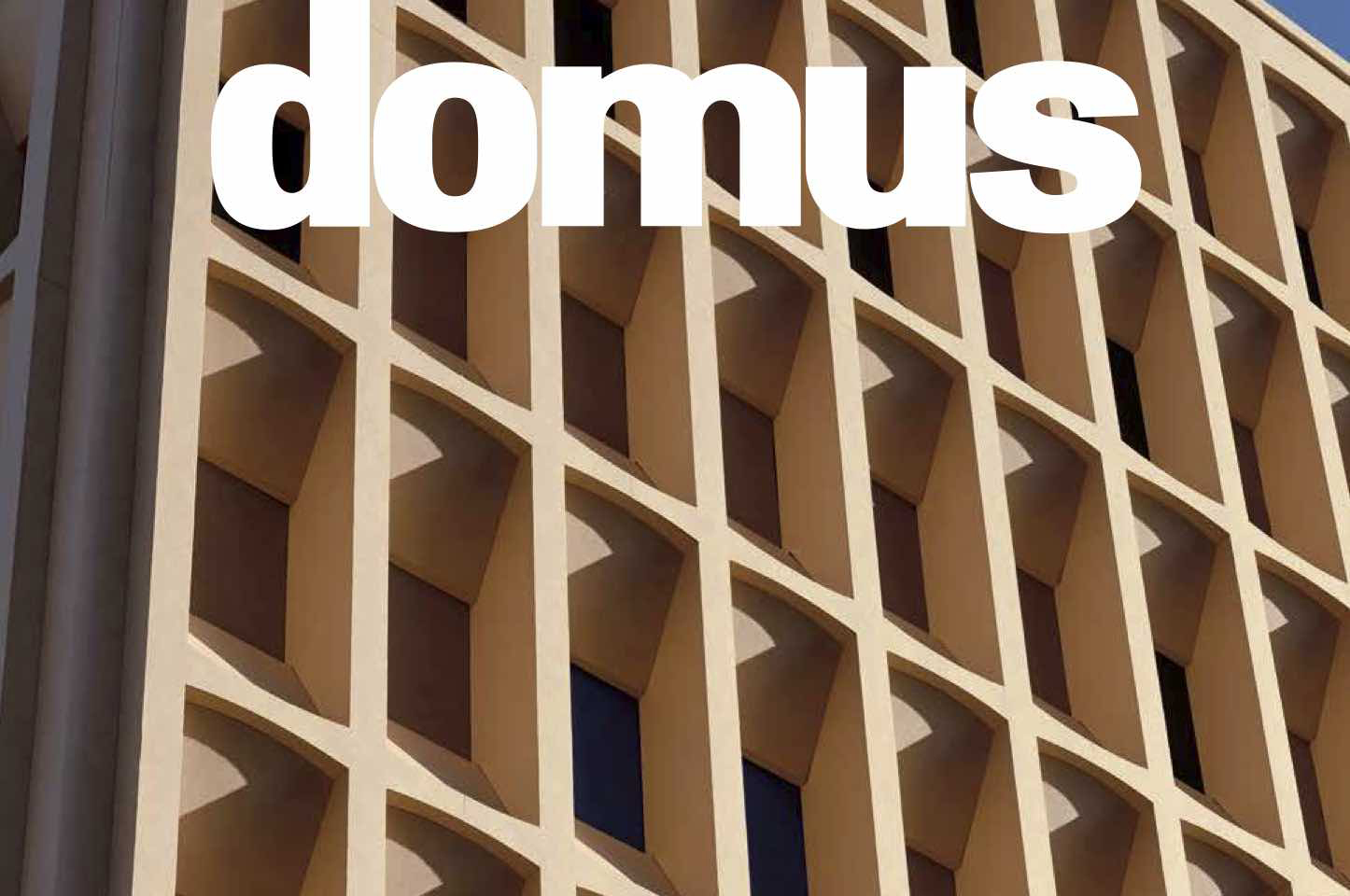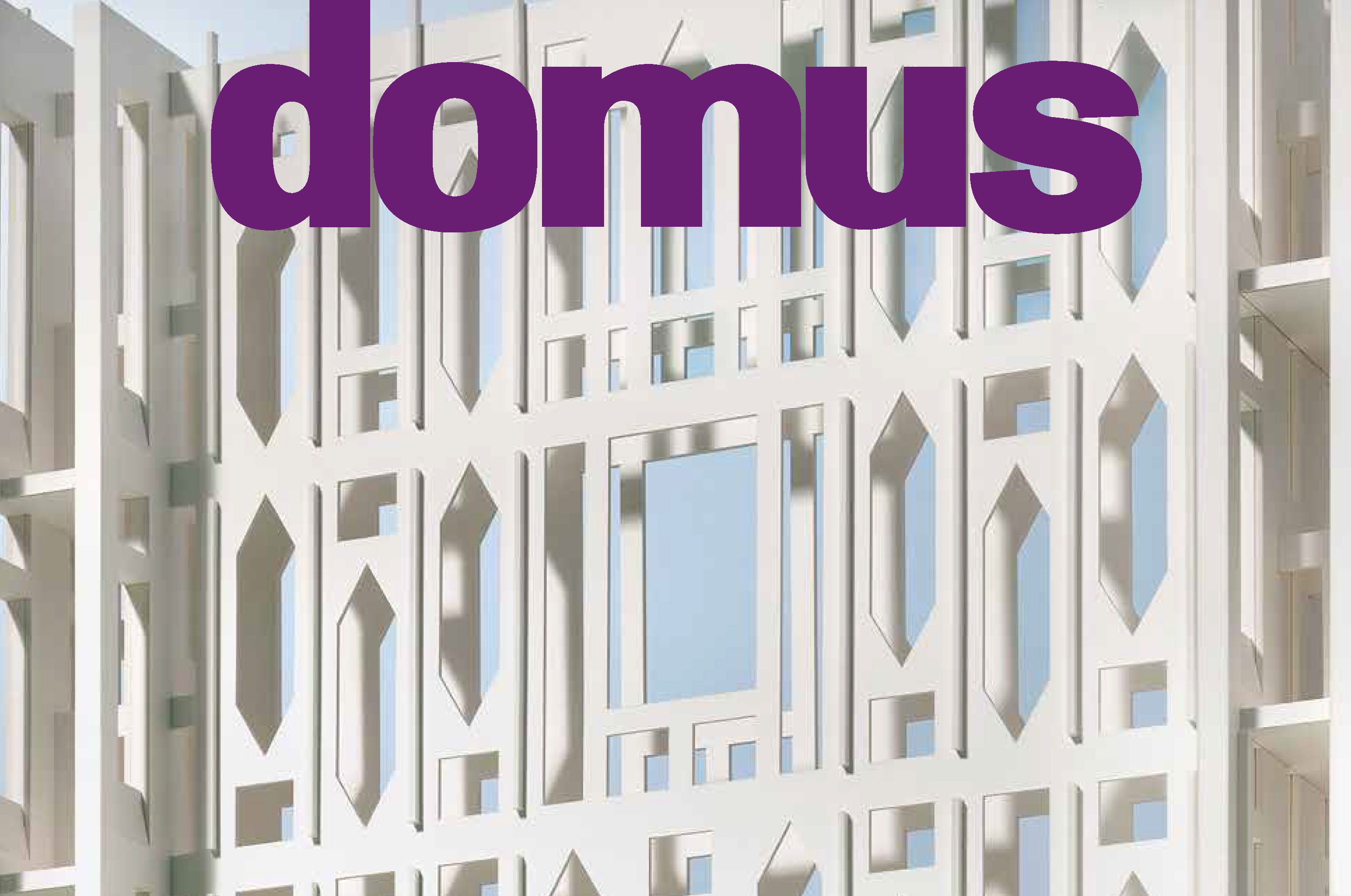The June 2020 issue of Domus magazine looked at the topic of shelter and home. While many found ourselves adjusting to our new domestic isolation during the Covid-19 outbreak, the issue reflected on the role of architecture in addressing the worldwide disparity of living conditions.
Staying apart, coming together
The coronavirus pandemic that has been spreading across the world since the beginning of this year, now having such cruel and devastating consequences in Italy and the rest of Europe, has asked many questions of us both personally and collectively. For the first time since World War II, parts of the world that have lived relatively free of hardship are now deeply discomforted, and many of our assumptions are challenged as we witness the unimaginable become a normality.
Away from the harsh realities of the front line that is drawing upon enormous human resources and extraordinary examples of personal courage, there is much discussion about what lessons we might learn from this situation. Beyond the normal reflections about the importance of family and loved ones, our forced isolation also reminds us about the role of community. The dedication of those working in the health services, and indeed all sectors of public service, has rightly earned universal respect and acknowledgement.
At the same time, we gratefully accept and appreciate the knowledge, experience and judgment of experts and scientists over those who indulge populist sentiments and ignorance. We turn our concerns and compassion to those less able to defend themselves, to the frail, the poor and the homeless who are inevitably going to suffer more than most. In other words, we are starting to appreciate those who should be appreciated, respect those who should really be respected, listen to those who should be listened to and care for those who need to be cared for. At this time, we are not only testing our individual resolve, or our resources, but our deeper commitment to society.
During more normal times, as professional architects, planners and designers, we are used to dealing with the tendencies of the free market economy and the conflict with values and considerations that are the basis of fair and civic society. During this current crisis, however, these tensions are even more intense and explicitly played out on a daily basis. While different parts of the community struggle with conflicting priorities, even the most ro-bust advocates of the free-market economies are accepting levels of intervention that would have been unthinkable a few weeks ago. Commercial consequence is having to be measured against common good and social welfare, even if this is often in the name of financial stability. Attention is being paid to how we act individually in a collective condition. Most importantly, growth and consumption are suspended as the a priori justification for all initiatives. Scale and speed are being recalibrated at every level of society. The old clichés are dusted off, and we are understand-ing the important things in life.
How can we retain this new perspective and ensure that when we emerge we don’t revert to previous habits? Although the conditions that encouraged this pandemic are not clear, we know that the commercial and social habits of our globalised world have a role somewhere. Hopefully hygiene standards, both general and personal, will be reconsidered along with the general attitude towards food production and distribution. However, in this crisis perhaps, unusually, the effects have more to teach us than the causes. The great lesson surely is that it is possible to do things differently, it is possible to reorder criteria, is possible for us to question the structure of things, especially those that protect the interests of the comfortable over the uncomfortable, short-term rewards over long-term security, exploitation over sustainability. If we are capable of responding forcefully and decisively in the face of an explicit crisis, why not to climate change and social inequality? Must we wait until they threaten us all even more catastrophically?
Before the appearance of the pandemic, there had been growing hope that this acute dual crisis of climate change and social inequality would make us change the way we live, that we would migrate from a system based on limitless growth, corporate greed and individual comfort towards one that started to take a wider and longer view about the importance of society and of the ecology of the planet.
Perhaps we now have evidence that things can change and that the exigencies that we have been trying to include into our existing systems can offer a new direction out of this disaster. If professionally we can manage to operate our way through this period, perhaps we can also have the courage and resourcefulness not only to serve the priorities of the free market and its need for growth and profit. Perhaps we will have the courage and a greater mandate to insist on creating only the buildings, spaces and objects that give solidity to our lives and that serve as a more fitting background to those conditions we now recognise more clearly as fundamental to our quality of life.
Shelter/Home
When we planned the sequence of agendas that introduce each month of Domus this year, our topics were selected to bring focus to the existential problems of climate change and social inequality. Even though these topics have been increasingly well understood, we must accept that, despite the deep complicity of our professions in these issues, we struggle to reorient ourselves in a convincing way. In this month’s agenda, centred on the issue of shelter, we try to draw attention to the scourge of homelessness and the way that we have normalised a human tragedy under a complex series of excuses. As with so much during these last few months, the pandemic that has been turning our world upside down has both sidelined these problems and brought them into sharper focus.
The drastic but apparently innocent instruction to stay at home, adopted by many countries over the last weeks and months, presumes – as we should – that we all have one to go to. Furthermore, it presumes that this home is a guarantee of security, sanitation and comfort. Yet this presumption flies in the face of statistics. It is estimated that over 20 per cent of the total world population now suffers from a lack of adequate housing. These figures include not only the obvious examples of refugee camps, shanty settlements and slum housing but also homelessness and temporary or transient housing that is now rife in cities throughout the so-called developed world.
In California, the most prosperous state in America, more than 100,000 people sleep on the streets. New York and Los Angeles account for nearly a quarter of America’s homeless population. In the UK, it is estimated that over 62,000 families are living in a form of temporary accommodation where many of them have to share kitchens and bathrooms, and will often be required to sleep in a single room. The strain on the system is even forcing some local authorities to turn to “exempt accommodation”.
The discourse about shelter tends to imply that it is something exceptional and temporary, but when people have spent twenty years in a refugee camp awaiting repatriation or are moved to a new hostel every three months, surely we need to reframe the discussion. We have normalised an emergency where the temporary is permanently protracted and the provisional is without end. While “housing” is part of the right to an “adequate standard of living” recognised in Article 25 of the Universal Declaration of Human Rights, we need to see this more explicitly as the right to a home, a space of protection, privacy and dignity, and to ensure that it is universally recognised as a human and civic right.
Those of us who have suffered the relative inconvenience of isolation in comfortable homes should consider those who cannot rely on the provision of even the most basic domestic conditions. If we need a physical example of inequality, then we cannot find anything more explicit. We might choose to consider that many of these situations are well beyond our view, that they are problems that are part of larger political and economic orders, that this is a humanitarian problem not one that we can tackle. Certainly, the geopolitical forces that cause many of these conditions are not easily addressed by us alone. Yet if we in the “developed” world cannot set an example by showing consideration for society as a whole, where the causes and solutions for suffering are close at hand, how can we expect others to begin to tackle the more insurmountable tasks of a global condition?
The current pandemic has reminded us (if we needed reminding) of the critical role of infrastructure, not only health but welfare and security too. All of us, even the most privileged, are in a position of mercy, exposed to the threat of an indiscriminate virus and sharing common anxieties. However, these exceptional weeks of discomfort will pass for most of us. We cannot begin to understand the endless suffering and conditions that so many have endured for much of their lives and will continue to endure after this pandemic subsides. What needs to happen for us to be similarly confronted with the real issues of housing, homelessness and shelter? When is a hidden crisis a visible crisis, and when will we all see this as part of our responsibility?



